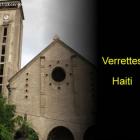Haiti's Houses Aren't Sturdy Enough to Withstand Large Quakes
ADVERTISEMENT
The second fault line crosses the peninsula of Southern Haiti from Tiburon in the west, crossing Port-au-Prince and continuing to the east via Enriquillo valley in the Dominican Republic. According to the experts of the Institut de Physique du Globe de Paris (IPGP), Haiti's southern peninsula fault line had not produced any significant earthquakes in recent decades, but was probably the source of the historic earthquakes of 1751 and 1770. The last October 6, 2018, earthquake involved a lot of vertical thrust instead of the horizontal push expected from the tectonic plate fault and it killed 11 people.
The magnitude of the quake was 5.9, centered about 12 miles (20 kms) west-northwest of the coastal town of Port-de-Paix, at a depth of 11.7 km, as per U.S. Geological Survey (USGS) reports. It was a reminder that too many of Haiti's houses and other structures still aren't sturdy enough to withstand large quakes.
Two chief factors in the damage that a quake can cause are the intensity of the quake and distance from the epicenter. The most important and unfortunate factor in the intensity equation for Haiti is the infrastructure involved. Haiti is a poor country with lax building standards and high population density, which makes buildings more likely to crumble. It's not the earthquake that kills people, it's the collapse of buildings that were poorly designed and built.
Read more: Earthquake, Rebuilding, Newsletter Articles, Disaster
« Senior U.N. Official Cheering an Investigation over Misuse of PetroCaribe Funds | Main | Risk for Hepatitis, Malaria, Typhoid, Cholera, Rabies, Yellow Fever in Haiti »
Leave a Reply
Name (required) E-mail (required, will not be published)
» »
Our objective is to share with you news and information about Haiti and the people of Haiti. Traditions, habits and the way we were or grew are alive in this site. We highly recommend that you Subscribe to our Newsletter and also share with us some of the things that are memorable and made us unique people.


 Saint Michel de L 'Atalaye
Saint Michel de L 'Atalaye  Black Friday Shopping Season
Black Friday Shopping Season  Maissade, Haiti
Maissade, Haiti  Verrettes, Haiti
Verrettes, Haiti  Haitian Creole Translation
Haitian Creole Translation